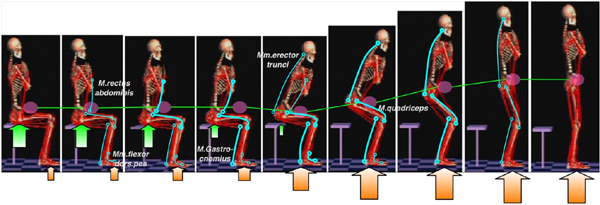Continued from here. I realize it’s been a while since the last installment of the series. Conveniently enough, I was sidetracked by endo, one of the main reasons for me going to pelvic floor PT in the first place.

Q: So you said that you saw the physical therapist in a private exam room. What happens in there?
It’s not exactly glamorous or exciting, but the first thing that happened was that the therapist asked me even more questions. Some questions tried to ascertain the specifics:
- How often do you experience menstrual pain?
- Pain with vaginal penetration? During sex, or also in other circumstances?
- Are you able to use tampons comfortably?
- Pain with urination? Defecation?
- What about incontinence? Even if you never actually wet yourself, are there times when you suddenly have to go right now?
- During those times, is the instigator something more physical (like a laugh or a sneeze) or something more psychological (remembering something, getting to a certain point in your routine, etc.)?
- Where do you experience pain: front of pelvis (uterine area), fronts of hips, vulvar area, along the insides of your thighs/groins, outsides of your hips, low back, tailbone?
- Which words would you use to describe the pain: sharp, dull, achey, throbbing, burning, pulling, tearing, constant, intermittent? I was asked to select adjectives for each area/event where/when I said I experienced pain, so this was kind of a drawn-out process.
- Does the pain change (intensity or quality) if you touch or put pressure on the part that hurts?
- Does the pain change with movement — standing up, sitting down, walking?
- What about tightness, stiffness, or range of motion issues? Ones that might be separate from “pain”?
There were also questions about PIV sex when it’s painful — what positions we’re in, whether foreplay happens first, types and quantities of lubes used, whether pain happens on initial penetration or afterward. I was a little embarrassed to be answering in such detail, but not because of anything unprofessional in the therapist’s manner as she asked or responded.
That’s great and all, but did you ever do anything besides answer questions? Isn’t it called physical therapy for a reason?
Well, yeah, there’s that.
After I returned from the land of one thousand questions, my PT put me through somewhat less than one thousand common movements. We left the exam room to go to a larger communal room. In it were several pieces of furniture and furniture-like structures.
She watched me sit down in a desk chair and stand up from a desk chair. I sat down on a sofa and stood up from a sofa. I sat down in a car seat — a fake car seat set up with steering wheel, not a child safety seat for a car — and stood up from the car seat. I walked on a flat surface; I walked on a ramp; I walked up and down a short flight of stairs. I lay down in a “bed” — really an exam table — to demonstrate how I usually sleep at night. I rolled off the exam table the way I typically roll out of bed in the mornings. Because she knew that yoga was a regular thing for me, she also watched me through a few sun salutes.
“I wouldn’t be surprised if you had some psoas tightness,” she said as we walked back to the exam room. “A lot of people do.”
“You could tell that from watching me walk?”
“I can make a good guess,” she replied. “But that doesn’t tell me everything I need to know.”

